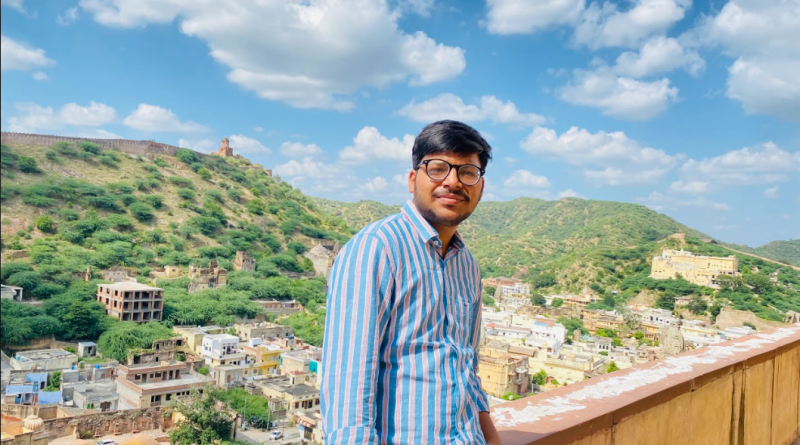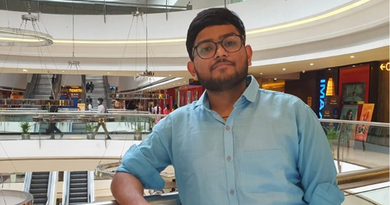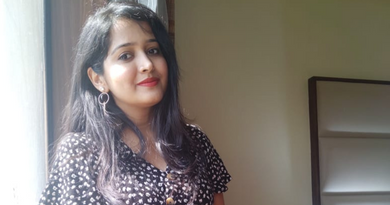Chemical Engineering internship in Goa – Mineral exploration and ocean research

About the Author: Nidhi Aggarwal, a student of BITS Pilani, talks about her experience of interning in the field of seismology and how the internship helped her in getting a clear idea about her career choices.
An internship is an ideal way to learn the actual prospects of a field and to explore the future scope of inter-disciplinary projects. Such was my internship at National Centre for Antarctic & Ocean Research (NCAOR), Goa, a global marine research institution in collaboration with Ministry of Earth Sciences.
Being from the chemical engineering background, interning in off-shore and seismology field gets off the route. It all started in the third year when I was giving a direction to my interests. I wanted to gain expertise in offshore drilling, and that’s how I started exploring this field. Seismology and Image Processing were the two subfields which excited me the most. I browsed through a lot of organisations, institutions, and MNCs which had expertise in this field. In MNCs, I found Schlumberger and Halliburton which have operations in India. In national institutions, there were NCAOR and National Institute of Oceanography. I applied at all the four places, but NCAOR was always my first preference. I had emailed to the head of the concerned department of NCAOR. I was fortunate that I got a reply after one week, and a telephonic interview was scheduled. He asked me some questions related to optics, fluid mechanics, and inorganic chemistry. It was not a hardcore interview but he was keen to know my motivation for doing this internship. In the subsequent email, he confirmed my internship. After a month, I got an email from the HR department asking me to submit certain details. There was a link to a form which I had to fill and submit.
I was ecstatic; it was partly attributed to the place, Goa, the land of beaches. The project which was given to me was also in sync with what I was looking for. However, I was flooded with all kinds of questions as to why I was choosing ocean research, why despite being a girl I was aiming for a future in off-shore, etc. I kept my cool and didn’t let those questions dampen my enthusiasm. On the first day of the internship, I reached my mentor’s office at 9 am sharp. My mentor was very nice and humble. After a small formal conversation, he took me to my desk and introduced me to the whole team. He initiated the conversation about the latest happenings in the company and appreciated my motivation to work in that field. It was a great way to break the ice. My project was on the topic “Marine Geophysical Data Analyses”. My first task was to understand seismic data acquisition. The concept of physical optics had to be applied in different combinations of reflective and refractive mediums. I started from scratch and made many systems starting from 2 to 7-8 mediums with various combinations. The main role was of the parameter – density. As the density of water medium changes, the velocity of the rays also changes accordingly which was the main key point to understand. Every system required a lot of analysis. This analysis could help in detecting the present carbonated salts, hydrated gas, etc. under the water.
As I was new to this field, I went through a book named Sheriff in the first fifteen days. It is really a good and informative book enlightening the history of oil exploration in offshore and how the big names (like Schlumberger, Halliburton, Baker Hughes) started, their mergers & acquisitions, followed by technical aspects in subsequent chapters. I read about 10-12 chapters and applied the concepts in ProMAXX software which was installed on our workstations. I made different systems and learnt how the change in velocity could tell about density. With the help of values of density, we could tell what type of particles were present under the water. As we cannot do drilling randomly anywhere on earth, we need to take into account two main things: availability of natural gas & hydrocarbons and the environmental hazards. That’s why, ProMaxx analysis is done first and if the region is found economically feasible, the process of drilling starts. As far as environmental hazards are considered, I went through technical details of six disastrous oil spills which had taken place in the 19th and 20th century and tried to understand the reasons that led to those occurrences.
I used to have 5 working days a week. NCAOR provided free accommodation facility to its interns, but it’s subjected to availability. There was a canteen inside the premises, and the food was quite good with a tinge of south Indian style. A bus facility was also provided to Vasco, one of the beautiful cities of Goa, twice a day. NCAOR shares border with the Arabian Sea, so one could go around and sit for a while; it was so peaceful and serene. Friday evenings used to be the best. I had become friends with a couple of fellow interns and so the weekends used to be super fun. We used to plan a lot on Friday evenings and wandered around whole weekend, enjoying the beaches, the nightlife, and the parties!
The 2 months that I spent with the company were as fulfilling as anything I’d done professionally in quite a while. The learning involved was huge. Every day brought with it an opportunity to learn something new. As a result of my internship, today I’m working in the same field of mineral exploration in a company, Vedanta Resources PLC, headquartered in London, and I’m specialising in process engineering.
Intrigued by Nidhi’s voyage into mineral exploration? Check out these cool chemical engineering internships and get on with your own voyage.
Editor’s note – If you also have an interesting story to share, you can now participate in Your Internship Story Contest 2017 and win cash prizes and goodies worth INR 1 Lac!



